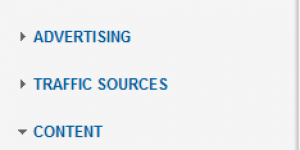
Plan Your Rebranding to Avoid De-Branding
Without careful planning and implementation your rebranding campaign can devolve into a de-branding campaign, diminishing your presence on the internet and social media, creating confusion with your customers. After years of developing a brand sometimes a strategic decision is made to change the brand or create new brand and start a re-branding campaign. Whatever the reasons for changing the brand, before you choose your new identity and launch your rebranding campaign there are several things to consider. Before there were websites, domain names, and social networks rolling out a new brand was a bit more straightforward. You picked a new name, made sure there were no copyright issues or companies using a similar name, set the creative team in motion to create new logos, letterhead, print materials and other media materials, and then rolled out your new brand through traditional media. Rebranding required good planning and execution, but it was much less complicated than today. Let’s take a look at a brand launch gone bad and then how to do it right. Netflix Qwikster – example of branding faux paux A great recent example of a rebranding faux paux is Netflix roll out of Qwikster in 2011 and immediate retreat and euthanasia of the new brand. It was bad enough that the new brand represented a thinly veiled price increase of 25% or more to users, but to make matters worse, or from the public’s perspective ironically funny, there was already a @qwikster Twitter account in use and the avatar was a pot smoking, obviously high, Elmo. Needless to say this was a short lived brand and very embarrassing epic fail for Netflix. Netflix clearly demonstrated the need to do your homework and research before choosing a new brand name and launching it, lets take a look at some basic steps to avoid a Netflix brand fail Redux. 10 Steps to Prepare for Rebranding Before you embark on a rebranding campaign to roll out your exciting new brand here are some steps to take to ensure your campaign is successful: Google and Bing searches: Some would think that the obvious first step is #2 below, obtain the domain name, but before you do that it is smart to see what turns up for your prospective name in Google and Bing searches. We suggest you to both Google and Bing as they do turn up different results and we also recommend you go back several pages and do some variations on the search as well. Domain Name (url) availability: Prior to choosing your new brand name, the most important step to take is to confirm and then purchase the domain name for your new brand. In addition to purchasing the domain name you intend to use, make sure you check for obvious conflicts with similar domain names. Facebook Page availability: One you have your domain name purchased and it is under your control the next thing to check is availability of a Facebook Page with your new brand name. Facebook Pages have a title and can have a custom url such as Facebook.com/newbrandname There can be multiple Facebook Pages with the same title, but once the url is taken it is permanent and unavailable. If the url for your new brand is available that’s great news, but you will not be able to obtain it until you create a new Page and have a minimum of 25 Likes. If it is available you may want to create that new page, build it to 25 Likes and then lock down that url as soon as possible. Your current Facebook Page: If you have a current Facebook Page with a custom url you cannot change the url. Once a custom url is set on Facebook it is permanent. You also cannot “migrate” your Fans or Likes to a new Page. The only way to get your existing Fans to the new Page is to place frequent posts about the new Page notifying them of the new page with a link. Twitter handle (account name) availability: As you saw in the Netflix example above, make sure the Twitter handles you want for your brand are available and if so set up accounts immediately to lock these down. Pinterest: Pinterest is still an emerging social network platform, but it is presently the fastest growing, and even if you don’t have a presence on Pinterest today, you should plan for one in the future and obtain your brand name there with a page. Blogs: While you can’t necessarily lock down a blog name other than via a url (domain name), it is good to check for blogs with similar names and see if there are any potential conflicts. Obvious conflicts would likely have shown up in the Google and Bing searches, this is just an extra measure of precaution. Rolling out a new website: once all of the above is done and you are confident you have the right name chosen you can start the design of the new website. When you are ready to launch the new website it is imperative that 301 Redirects are set up from the old website and all of the old pages to the new website and equivalent replacement pages. Done correctly, 301 Redirects will preserve your search rankings and pass on the rankings to the new site. While there may be a small drop in your search rankings, it should be temporary. Announcing the new site: Now that you have a new brand and new website it’s time to let the world know. Use your social networks such as Facebook, Google +, Twitter and your blog to let everyone know. You can also use Facebook ads to build your new Facebook Page and do posts on the old Page to inform existing Fans of the new website and new Page. Email newsletters are also effective for reaching out to your customer base to let them know about the branding change. Consistency: With your new brand launched it is vital to be consistent with the new look, style, and tone and stay on message for the new brand. Commingling the brands will cause confusion, there is now only the new brand and you must stick with it.
Read more







